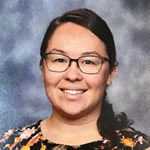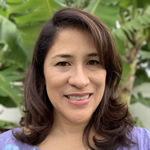This session will discuss the usability study’s methods, participants, and results, emphasizing design implications, and subsequent website modifications. In terms of measures, the usability study used the System Usability Scale (SUS) and Design-oriented Evaluation of Perceived Usability (DEEP). Data from the study found the online instructional resource to be a highly valuable source of information, with functional accurate content, and easy to navigate. Participants also reported satisfaction with the online instructional resource. The results of the study suggested that the instructional resource was able to provide high school counselors with a single online source, which provided tutorials, instructions, and Early College course information to better help their students. The outcome of this study highlights the importance of implementing well designed online resources to serve Hawaiʻi’s school counselors. Future modifications may include reaching out to both parents and high school students.
A recording of this presentation is available.
Click the button to the right to access the session archive.

 Brandon Carlos grew up in Waiʻanae, Hawaiʻi. Earning his B.S. in Psychology and Sociology from the University of Hawaiʻi — West Oʻahu (UHWO); he moved into the education field as the Early College Coordinator. He is currently a Learning Design and Technology Masters student at the University of Hawaiʻi at Mānoa by night and an Early College Coordinator for UHWO by day. Brandon is passionate about supporting high school administrators, faculty and students and grateful to have had the opportunity to create an online instructional resource for the Early College program.
Brandon Carlos grew up in Waiʻanae, Hawaiʻi. Earning his B.S. in Psychology and Sociology from the University of Hawaiʻi — West Oʻahu (UHWO); he moved into the education field as the Early College Coordinator. He is currently a Learning Design and Technology Masters student at the University of Hawaiʻi at Mānoa by night and an Early College Coordinator for UHWO by day. Brandon is passionate about supporting high school administrators, faculty and students and grateful to have had the opportunity to create an online instructional resource for the Early College program. Tiana Guerrero is a part-time teacher at Lihikai Elementary School and a second-year graduate student in the Learning Design and Technology (LTEC) program at the University of Hawaii at Manoa (UHM). Upon receiving a B.Ed. in Elementary Education from UHM in 2018, she began teaching at her alma mater, Lihikai Elementary, as a growth block teacher for students who need additional support in a variety of subject areas. She has been privileged to be working in her dream position as a teacher in the community that helped to grow her love for teaching and learning. To further support her community and the teachers at Lihikai, she created a website that provides the teachers with resources that will assist them in differentiating their instruction to meet the needs of all their learners.
Tiana Guerrero is a part-time teacher at Lihikai Elementary School and a second-year graduate student in the Learning Design and Technology (LTEC) program at the University of Hawaii at Manoa (UHM). Upon receiving a B.Ed. in Elementary Education from UHM in 2018, she began teaching at her alma mater, Lihikai Elementary, as a growth block teacher for students who need additional support in a variety of subject areas. She has been privileged to be working in her dream position as a teacher in the community that helped to grow her love for teaching and learning. To further support her community and the teachers at Lihikai, she created a website that provides the teachers with resources that will assist them in differentiating their instruction to meet the needs of all their learners. Growing up in Japan as an American and completing his education in the Japanese school system from kindergarten through high school was a life-changing experience, one that generated a fascination with technology, a passion for science fiction and his present professional dedication to international education and its inherent intercultural challenges. Casey Bales obtained his BBA at the Shidler College of Business and then began his career at Hawaii Tokai International College in the International Programs department where he creates educational programs for students of all ages. Now finishing up his LTEC master’s at the University of Hawaiʻi at Mānoa, he hopes to continue his path in education by applying what he’s learned to enhance educational practices in Japan and beyond.
Growing up in Japan as an American and completing his education in the Japanese school system from kindergarten through high school was a life-changing experience, one that generated a fascination with technology, a passion for science fiction and his present professional dedication to international education and its inherent intercultural challenges. Casey Bales obtained his BBA at the Shidler College of Business and then began his career at Hawaii Tokai International College in the International Programs department where he creates educational programs for students of all ages. Now finishing up his LTEC master’s at the University of Hawaiʻi at Mānoa, he hopes to continue his path in education by applying what he’s learned to enhance educational practices in Japan and beyond. Born and raised in the San Francisco Bay Area by naturalized U.S. citizens, Melanie Chan-Vinoray was the first in her family to earn a Bachelor’s degree. After earning a B.A. in American Studies from the University of California, Santa Cruz, she served two years in the Americorps National Service Program, working to increase academic achievement in a public school in Oakland, CA. Committed to serving historically and systemically underserved communities through the field of education, Melanie completed a state-approved secondary teacher preparation program at San Francisco State University to continue her work as an educator in public schools. Her commitment as a classroom teacher brought Melanie to Maui, HI, a decade ago. She continues to serve as a middle school teacher in the Hawai’i public school system and strives to spark students’ interests and passions in the classroom. Melanie’s studies in the LTEC graduate program will directly benefit public school students and has also provided her time for immense personal development. She is a second-year graduate student in the College of Education’s online LTEC program at the University of Hawai’i at Manoa.
Born and raised in the San Francisco Bay Area by naturalized U.S. citizens, Melanie Chan-Vinoray was the first in her family to earn a Bachelor’s degree. After earning a B.A. in American Studies from the University of California, Santa Cruz, she served two years in the Americorps National Service Program, working to increase academic achievement in a public school in Oakland, CA. Committed to serving historically and systemically underserved communities through the field of education, Melanie completed a state-approved secondary teacher preparation program at San Francisco State University to continue her work as an educator in public schools. Her commitment as a classroom teacher brought Melanie to Maui, HI, a decade ago. She continues to serve as a middle school teacher in the Hawai’i public school system and strives to spark students’ interests and passions in the classroom. Melanie’s studies in the LTEC graduate program will directly benefit public school students and has also provided her time for immense personal development. She is a second-year graduate student in the College of Education’s online LTEC program at the University of Hawai’i at Manoa. Hongwei Shimizu received BA in Visual Media and MFA in Film & Electronic Media both from AU (American University). She has big passion in teaching, so she also gained Oxford Seminars’ TESOL/TESL/TEFL (100-HOUR) Certificate and Certificate in Greenburg PH.D. Teaching Seminar. Hongwei Shimizu now is a second year LTEC Master student at UH. She hopes she can contribute more and more in the education field of her Visual Media techniques and Multi-languages (Japanese, Chinese, and English) skills.
Hongwei Shimizu received BA in Visual Media and MFA in Film & Electronic Media both from AU (American University). She has big passion in teaching, so she also gained Oxford Seminars’ TESOL/TESL/TEFL (100-HOUR) Certificate and Certificate in Greenburg PH.D. Teaching Seminar. Hongwei Shimizu now is a second year LTEC Master student at UH. She hopes she can contribute more and more in the education field of her Visual Media techniques and Multi-languages (Japanese, Chinese, and English) skills.